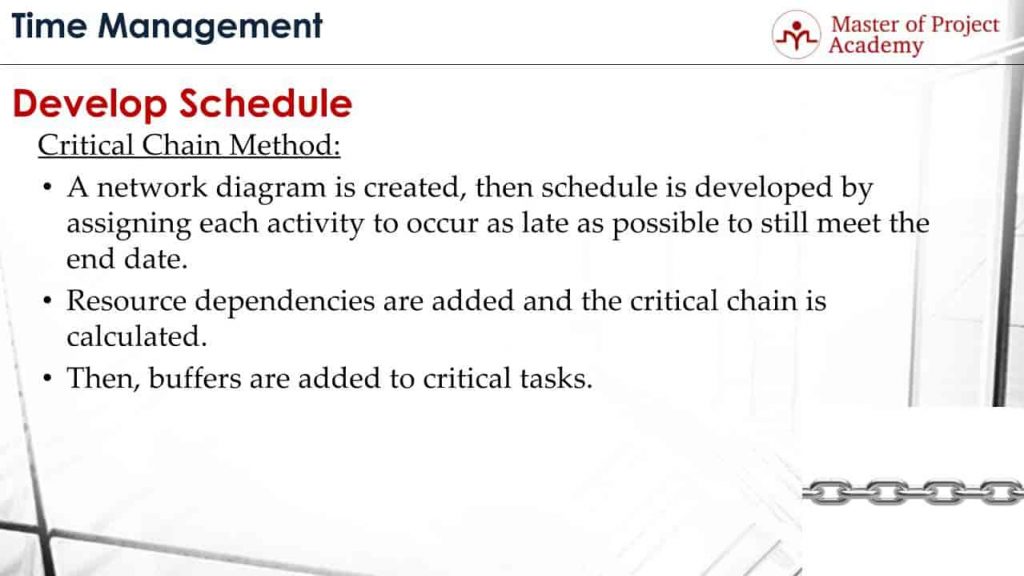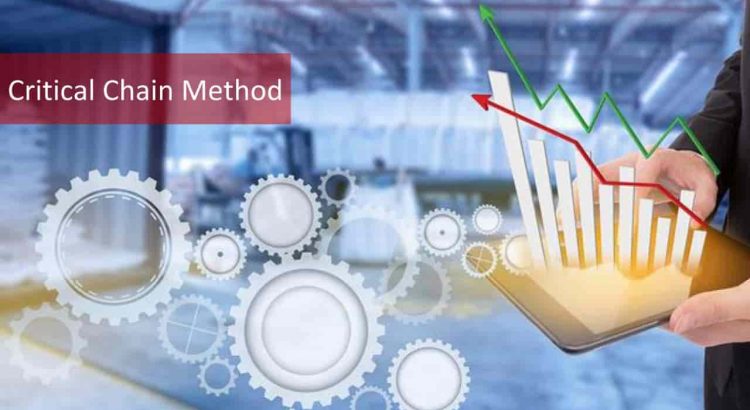During the Develop Schedule process, which is the 6th process of Time Management Knowledge Area, the outputs of the Time Management processes occurred before are organized and the final schedule of the project is produced. This is the key output of the Develop Schedule process. After the schedule is created, it’s time to analyze it! So that’s why the schedule network analysis will begin afterward. And as listed in it the PMP training course, it may take multiple forms or it may be applied with different analysis methods. One of these methods is called Critical Chain.
Attend our 100% Online & Self-Paced One-Hour Free PMP Training.
Critical Chain Method vs Critical Path Method
Now, as you may have guessed from its name, Critical Chain Method is related to Critical Path Method. Before describing what Critical Chain Method is, let’s briefly remember what Critical Path method was. After we have defined the relationship of project activities, we were then connecting these activities to create the network schedule of the project. Then the last step was to determine the longest path to find critical path.
Critical Chain Method was developed by Eliyahu M. Goldratt. The approach of CCM is different than Critical Path. Let’s see how these two methods differ.
In the Critical Chain Method, a network diagram is created first. Then the second step is to develop the schedule by assigning each activity to occur as late as possible to still meet the end date. The third step is adding the resource dependencies. Finally, the critical chain is calculated.

The Advantages
But why using Critical Chain Method? What are the benefits? As we know, you will not have unlimited project resources in a project. These resources might be people, equipment, or physical space, etc. Even if there is not a mandatory dependency between the activities, sometimes the same resource may perform the activities. So this creates a dependency between the resources. This is why all of these dependencies must be considered in critical chain method as well.
Note that, in this method, the buffers should be added to critical tasks. What’s the objective of doing that? Because if there are risks that may cause project activities to take longer, these must be reflected in planning to create a realistic and attainable schedule.
Review by: Catherine Stewart


